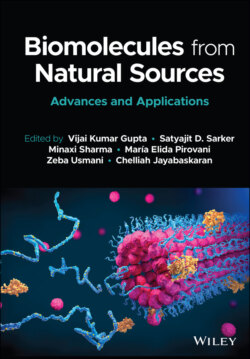Читать книгу Biomolecules from Natural Sources - Группа авторов - Страница 74
2.4.11 Gums
ОглавлениеGums are plant substances which can be dissolved or dispersed in water to form more or less viscous colloidal solutions or dispersions. The gums are naturally occurring substances, mainly carbohydrate in nature and are being used since the beginning of civilization for various purposes e.g., a food ingredient (for humans and cattle) and manufacturing domestic items. The properties of natural gums have been known for a long time including its gelling, thickening and binding properties. The mannans are commonly referred to as “gums”. Guar gum comes from the endosperm of the seed of the legume plant Cyamopsistetragonolobus. The gum is commercially extracted from the seeds essentially by a mechanical process of roasting, differential attrition, sieving and polishing [202]. Khaya gum is a polysaccharide obtained from the incised trunk of the tree Khaya grandifoliola from the family Meliaceae. Acacia gum (GA) is the exudate from the Acacia senegal and Acacia seyal trees, belonging to Leguminosae family [203]. Most of the GA is harvested from the arid lands of Sudan, Chad, Nigeria, Senegal, and Ethiopia. Sudan is the largest exporter, accounting for up to 80% of the trade, followed by Nigeria. The use of GA dates back to 5000 years ago. GA has also found use in the textile industry for its ability to enhance tensile strength of the yarns [204]. Glactomannan is one of the principle biotechnologically interesting molecules. There is a particular interest in the synergistic interactions between both galactomnnans and glucomannans with xanthan, carrageenans and agarose. Glucomannan is used as antioxidant [205].
